I ran a benchmark on the Xperia 1 VI and Xperia 10 VI to measure the performance of the device and measure the device temperature

We ran various benchmarks on the latest models in Sony's Xperia smartphone series , the Xperia 1 VI and Xperia 10 VI , to see how powerful they are, and also measured their battery life.
Xperia 1 VI | Xperia | Sony
Xperia 10 VI | Xperia | Sony
https://www.sony.jp/xperia/xperia/xperia10m6/
First, I checked the CPU information using the CPU information checking app ' CPU-Z '.
The Xperia 1 VI (hereinafter referred to as '1 VI') is equipped with the 'Snapdragon 8 Gen 3 Mobile Platform.' CPU-Z shows the model number 'SM8650' and that it has an 8-core configuration.

The Xperia 10 VI (hereinafter referred to as '10 VI') is equipped with the 'Snapdragon 6 Gen 1 Mobile Platform.' CPU-Z shows the model number as 'SM6450' and that it has an 8-core configuration of 4 ARM Cortex-A78 and 4 ARM Cortex-A55.
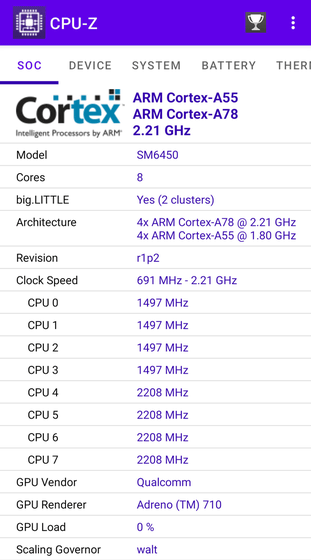
I ran the standard benchmark app '
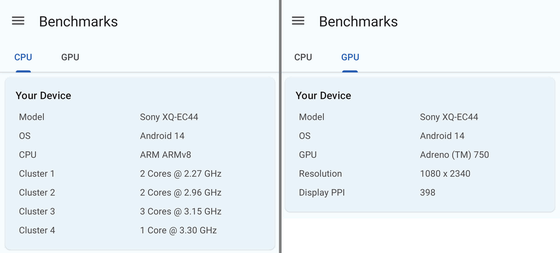
Also, the device information for 10 VI looks like this:
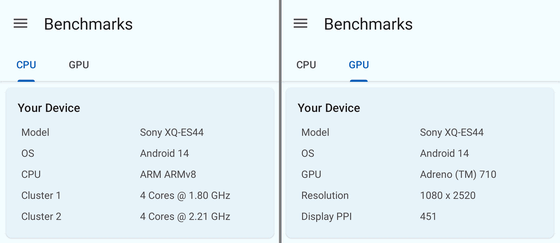
The benchmark results are summarized below. The 1 VI is a flagship model, and the 10 VI is a mid-range model, and the scores differ greatly due to the different SoCs.
| 1 VI | 10 V.I. | |
|---|---|---|
| CPU Single Core | 2135 | 858 |
| ├Integer arithmetic | 2201 | 853 |
| └Floating-point arithmetic | 2018 | 868 |
| CPU Multi-core | 6618 | 2795 |
| ├Integer arithmetic | 6494 | 2468 |
| └Floating-point arithmetic | 6856 | 2986 |
| GPU (OpenCL) | 14066 | 1317 |
| GPU (Vulkan) | 16179 | 1663 |
In the standard graphics benchmark app ' 3DMark ', we ran the 'Wild Life Stress Test' which runs 20 laps of 'Wild Life', a heavy-duty benchmark that uses high-quality graphics. The measurement environment was a stable room at approximately 25 degrees, with no wind.

The highest score for 1 VI was '13703', the lowest score was '8330', and the stability was 60.8%.
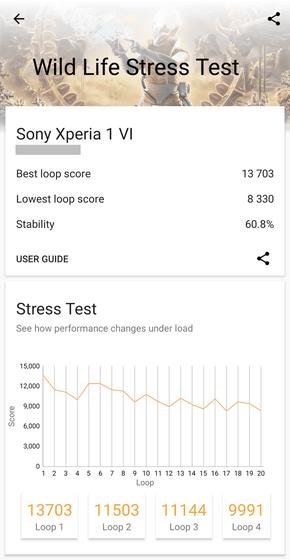
Comparing the highest score on the first lap and the lowest score on the 17th lap, we can see that the difference is between 0 and 20 seconds and 40 and 60 seconds of the 1-minute benchmark. In addition, the change in battery life due to the benchmark dropped from 89% to 80%, and the frame rate fluctuated from a minimum of 19 FPS to a maximum of 118 FPS.
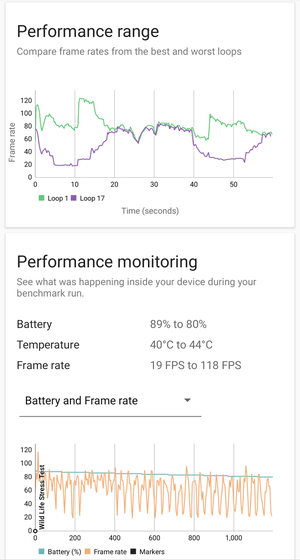
A graph of the heat changes. The benchmark started at 40°C and ended at 44°C, so there was no significant change.
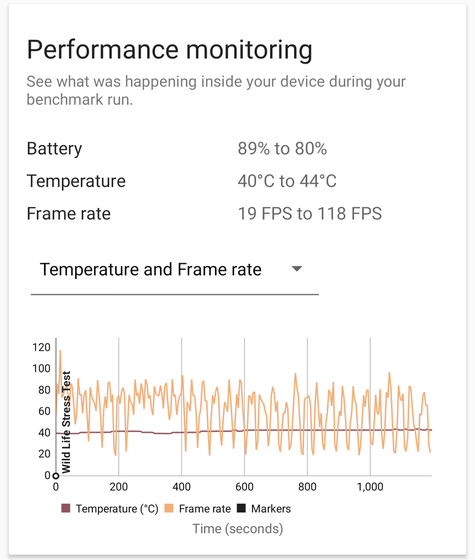
For the 10 VI, the highest score was 2412, the lowest was 2404, and the stability was 99.7%. There was almost no variation in the scores.
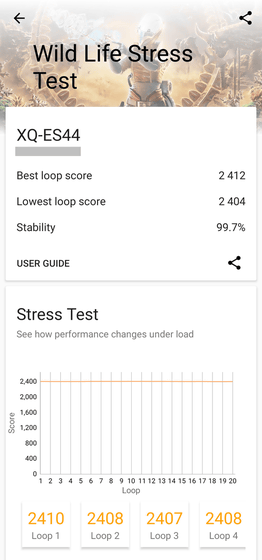
Comparing the highest score on lap 10 and the lowest score on lap 19. The difference was so small it could be called an error.
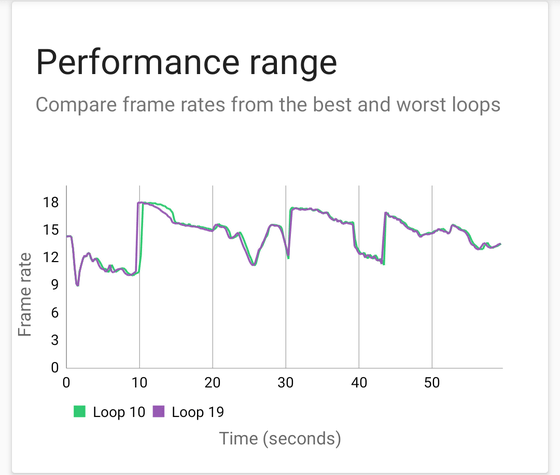
In the benchmark, the battery dropped from 89% to 85%, and the frame rate ranged from 9 FPS to 18 FPS.
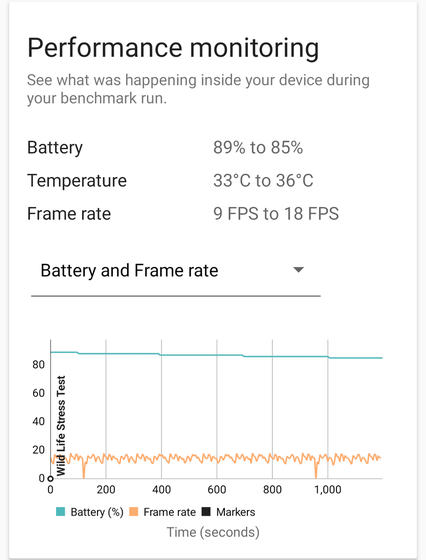
The minimum temperature was 33 degrees and the maximum was 36 degrees. Although it is not suitable for running high quality graphics, it seems to have been operating stably within its possible limits.

We also ran the standard mobile device benchmark,
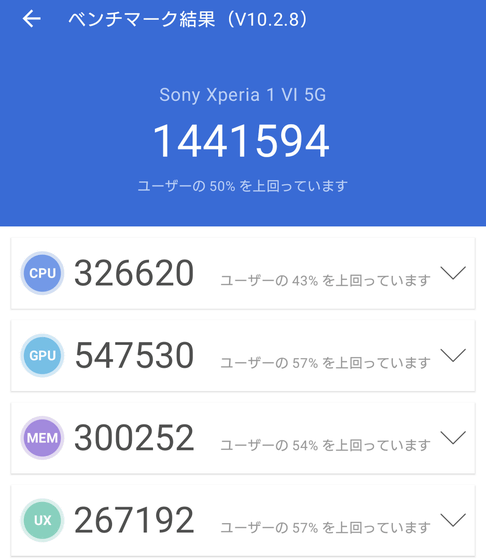
On the other hand, the 10 VI had a total score of 541306. The graphics test was not the standard one, but the light version with a light load was automatically selected.
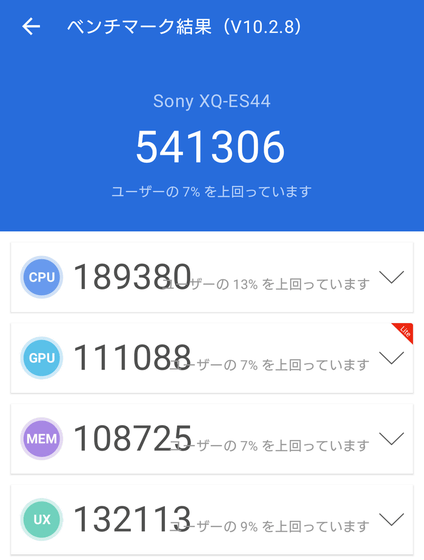
To see how hot the device gets when under load, we used the
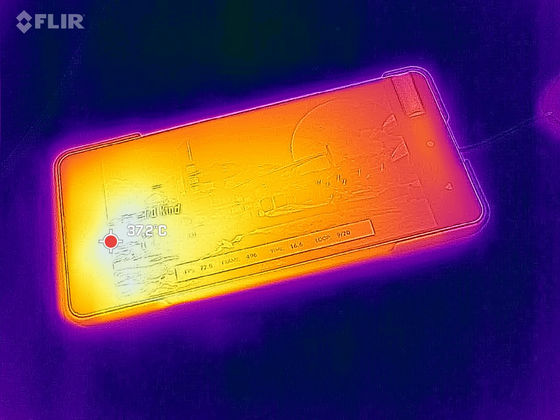
The back side is about 31 degrees with
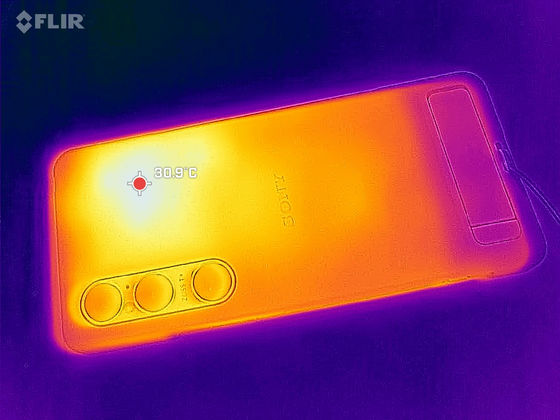
When I removed the case, the temperature was about 42 degrees.
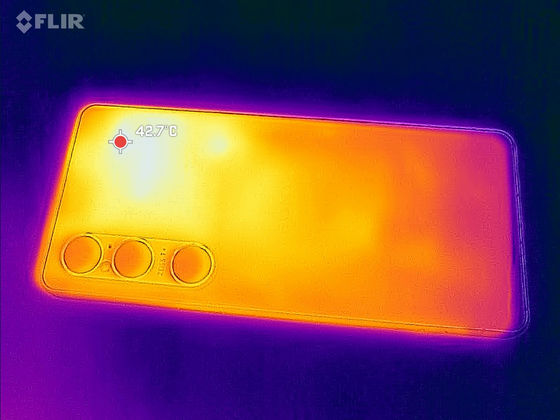
Just to be sure, we also measured it with a non-contact infrared thermometer, and the temperature on the screen was 37.2 degrees, almost the same as the FLIR measurement.
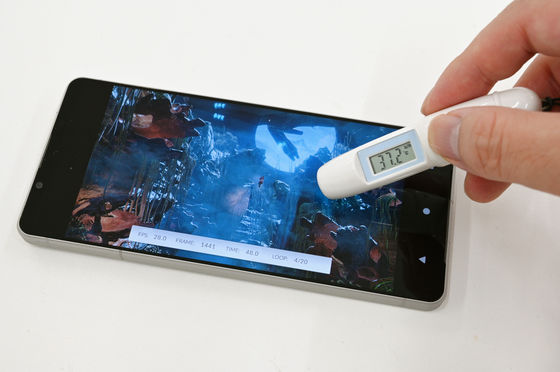
The back without a case was 40.6 degrees, which was a little lower than the FLIR measurement. In any case, it was so hot that you could tell that the device was quite hot when you touched it directly with your hand, so it's best to keep a cover on.

I also performed the same measurement on the 10 VI. The temperature of the screen side measured with the FLIR ONE Pro was 35.8 degrees.
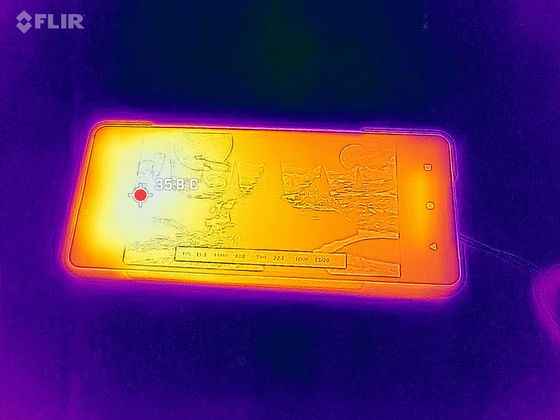
With the cover on, the temperature on the back of the phone was highest near the camera, at 33.8°C. This is an exposed area with or without the cover.
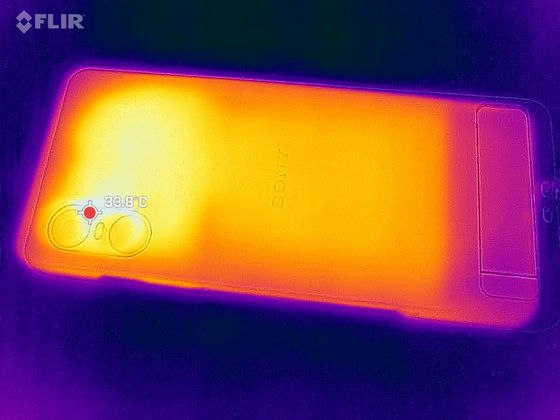
However, when I removed the cover the maximum temperature was 29.5 degrees, just below the level of the camera.

The non-contact infrared thermometer measured 31 degrees on the screen side.
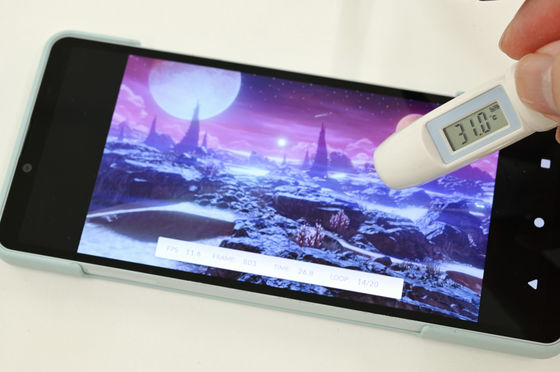
The back side without the cover was 33 degrees. Depending on the timing of the benchmark, it may go up or down a little, but it will never go up to 35 degrees.

Both devices have a 5000mAh battery. The 1 VI 'lasts two days on a full charge, with over 36 hours of continuous video playback, roughly twice as long as the 1 V,' while the 10 VI 'lasts two days without charging, so you can rest assured even when you're out and about for long periods of time,' making the long battery life one of the devices' selling points.
However, Sony's official test content was 'based on 360 minutes of use per day (1,080 minutes of standby time) of browsing the Internet, watching videos, playing games, and other functions,' so we ran some tests using '
During the measurement, the device's screen brightness was set to maximum, the volume was low, and earphones were used. The room temperature was kept at approximately 25 degrees, and the game settings were basically left as installed. For this reason, the graphics settings are different, with 1 VI set to 'high' image quality and 10 IV set to 'low' image quality. As shown in the photo, Amber was left alone looking toward Seisen-cho from the roof of the Knights of Favonius, with the windmills inside the castle moving and the waterfall and dragonspine visible in the distance.
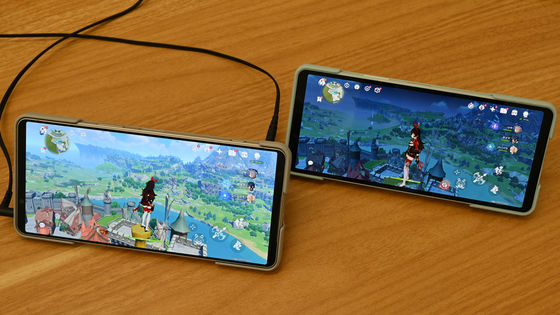
The battery power measurement started from 90% because the initial setting of the battery-friendly charging is set to charge only up to 90%. Also, the battery saver function was set to automatically turn on when the battery level was 20%.
The results are as follows: 1 VI was 333 minutes (5 hours 33 minutes), 10 VI was 380 minutes (6 hours 20 minutes). If you are playing a location-based game, the battery may run out a little earlier. On the other hand, if you are playing a light game, it should last longer.
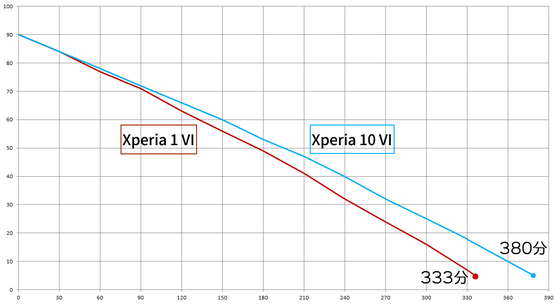
We also measured how long it took to recover the battery to 90% when charging a device with 5% remaining battery power and turned off using a 27W fast charging adapter. The results were as follows: 1 VI took 60 minutes (1 hour), 10 VI took 76 minutes (1 hour 11 minutes).
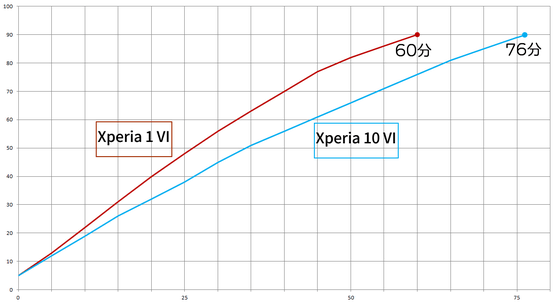
After this, I took out the 1 VI and 10 VI and took a bunch of photos of various things, so I'll show you some examples of those photos.
Continued

Related Posts:



